Table of contents
The raw avocado ( Persea americana Mill.) has health-promoting properties despite its high fat content. Because of the consistency of its flesh, it is nicknamed "butter fruit". Organic ?
Use in the kitchen
Avocados are pear-shaped fruits whose skin can be green to purple-black, depending on the variety. The flesh of a ripe avocado is yellow to green, with a buttery, soft consistency. Avocados taste creamy and nutty. The skin and the golf ball-sized stone inside are inedible. The variety most commonly consumed in Europe is called 'Hass'. Its skin is dark green to almost black and has a rough surface. It has replaced the slightly larger, green 'Fuerte' in many places. In this text we use the term avocado for both varieties. How much of the weight can you eat? The Hass variety weighs between 160 and 190 g, of which the skin and stone make up between 47 and 55 g. So 140 to 150 g per fruit is edible, or around 15% more for the Fuerte (which remains green).
Can you eat avocado raw? Avocados are usually eaten raw. Cooking them is not recommended as they can taste bitter. However, they can be served with warm dishes without any problem. The most well-known recipe with avocado is guacamole. Traditionally, the avocado is pureed with lime juice and chopped red onions, garlic and dried chili peppers are added. A fruity variant is strawberry-mango guacamole . Avocado is a delicious and filling addition tolettuce, iceberg lettuce or Batavia lettuce and tastes great with any kind of vegan raw food such as tomatoes, sweet peppers or cucumber .
You can also easily make an oil-free dressing from avocado. Avocado is a popular ingredient in smoothies and, in Asia, in milkshakes. Thanks to its buttery consistency, avocado is also often used in vegan desserts, for example in a raw chocolate cream . The use of avocado as a butter substitute in baking is becoming increasingly popular.
Two ways to eat an avocado
To eat an avocado, it is best to wait until it is perfectly ripe, as it is neither too hard nor overripe and is therefore edible. See the "Storage tips" section. Cut the avocado in half down to the pit, circle around it and split the avocado in half. Then you can scoop it out and season it with a little salt and pepper, lemon juice, mustard or honey. You should look out for discolored spots or black spots and cut them out generously if necessary. If too much of the avocado is darkly colored or if it is very fibrous and smells unpleasant, you should not eat it.
If the avocado is already quite soft or has slight bruising, it is worth peeling off the skin first. The rotten spots are usually directly under the skin and can be easily removed. However, you also have to look out for rotten spots on the stone inside the avocado. This way you can cut the avocado into slices or cubes and arrange it attractively. A few splashes of lemon or lime juice will prevent the avocado flesh from turning brown.
Vegan recipe for avocado pesto
Ingredients (for 4 people): 2 raw avocados (organic), 1-2 cloves of garlic, 30 g fresh basil, 2 tbsp lemon juice, 3 tbsp yeast flakes ,black pepper .
Preparation: Halve the avocados and scrape out the flesh with a spoon. Peel the garlic cloves. Wash the basil and drain well. Put the avocado flesh, garlic, basil, lemon juice and yeast flakes in a blender and puree until smooth. Season with pepper. If necessary, you can add a little drinking water if the mixture is too dry.
Vegan recipes with avocado can be found under the note: " Recipes that have the most of this ingredient ".
| Not only vegans or vegetarians should read this: Vegans often eat unhealthily. Avoidable nutritional errors . |
Purchasing - Storage
Avocados are often found in the range of large supermarket chains such as Coop, Migros, Denner, Volg, Spar, Aldi, Lidl, Billa, Rewe, Edeka or Hofer, occasionally in controlled organic quality (organic quality). Avocados can also often be bought in organic supermarkets such as Denn's Biomarkt or Alnatura . Like many tropical fruits, avocados are in season almost all year round and are available in stores all year round. In South Africa and Kenya the season starts in March. Harvesting begins in Mexico in August, in Israel in October and in Spain from November to April/May. 3.5
The availability of avocados varies depending on the size of the store, catchment area, etc. Our recorded food prices for the DA-CH countries can be found above under the ingredient image - and by clicking on them you can see their development at different suppliers.
Storage tips
It is best to buy avocados when they are hard and let them ripen at home (this is also known as post-ripening). The reason for this is that many people press the skin when they buy an avocado to determine how hard it is, and the fruit then develops rotten spots. You should not press on it with your fingers, but visually check the area around the stem or feel the hardness there with very light pressure from your whole hand - or no longer if you can eat it the same day. Whole avocados that are not yet ripe should be stored at room temperature. At least with the Hass variety, you can buy supplies for a maximum of three to four days. Sliced or halved avocados can be kept in a fresh food container in the refrigerator for 1-2 days. 4 It is best to keep the half with the stone as this protects the flesh from oxidation, or sprinkle it with lemon juice.
When is an avocado ripe? If the skin gives slightly when pressed against the stem, the avocado is ready to eat. It is better to assess the color under the stem than to do the pressure test, which causes discoloration and ultimately rotting of the flesh. If the stem can be easily removed and the color underneath is yellowish-green, the avocado is ripe. If it is brown, the avocado is usually overripe. 4 In supermarkets, the stem is often removed and you can easily check this spot. You can also tell if avocado is ripe by its smell. If the avocado smells sour, slightly chemical or even rancid, it is spoiled. With a little experience, you will learn.
How can you ripen avocados? To do this, wrap the avocado in newspaper and store it at room temperature. You can also put a banana or an apple in there. These fruits emit the ripening gas ethylene, which accelerates the ripening of the avocado. 4 If you have cut open an unripe avocado, you can coat the flesh with lemon juice, put the halves back together and carefully secure them with a rubber band. The ripening of the avocado usually takes 2-3 days.
Ingredients - Nutritional values - Calories
A raw avocado contains 160 kcal per 100 g. The carbohydrate content is 8.5 g/100g, of which 6.7 g arefiber and only 0.66 g are sugar. 1
How much protein does an avocado have? 100 g of avocado contain 2 g of protein. This is quite low compared to other fresh foods such as edamame (11 g/100g) or corn on the cob (7.1 g). 1
At 15 g/100 g, the fat content of avocados is one of the highest of all known fruits and vegetables. It is comparable to coconut meat, which has a fat content of 33 g/100 g. 1 Avocados do contain polyunsaturated fatty acids, but the fatty acid ratio is unfavourable at 15:1 (omega-6:omega-3 or LA:ALA). This means that the fruit contains more inflammatory omega-6 fatty acids (LA) than anti-inflammatory omega-3 (ALA). According to the Federal Office of Public Health ( FOPH ), the average value should not exceed 5:1 (LA:ALA). This can be corrected, for example, by eating pea muesli in the morning or by eating a diet rich in omega-3 thanks to linseed, chia seeds and walnuts.
With 81 µg/100g, avocados contain a lot of folate (folic acid). This corresponds to 41% of the daily requirement. Savoy cabbage and garden cress have a similar folate content: both 80 µg/100g. Foods that contain a lot of folate are mung beans (625 µg/100g) and chickpeas (557 µg/100g), but losses are to be expected during cooking. 1
Does an avocado contain vitamin K or vitamin K2 ? 100 g contains 21 µg of vitamin K, which corresponds to 28% of the daily requirement. However, this is in the form of vitamin K1 and not vitamin K2 . Blackberries andblueberries have similar values (20 µg and 19 µg/100g respectively). If you want to eat more vitamin K, a salad combination withlettuce or romaine lettuce is worthwhile, both of which contain 102 µg/100g. 1 Raw kale (705 µg/100g) and chard (830 µg/100g) have very high vitamin K values. This corresponds to 940% and 1107% of the recommended daily dose. 1 The absorption rate is 20-70% (absorption rate of the vitamin in the body). Toxic properties of vitamin K from food are not known. 2
The potassium content is 485 mg/100g. This covers 24% of the daily requirement. Raw kale (491 mg/100g) and raw spinach (558 mg/100g) have similar values. Good sources of potassium are legumes and nuts, such as almonds (733 mg/100g) or chickpeas (718 mg/100g). 1
Do avocados contain vitamin D? Some websites list vitamin D as a component of avocados, but according to the USDA, there is no vitamin D in avocados. 1
The total ingredients of avocados (raw), the coverage of the daily requirement and comparison values with other ingredients can be found in our nutrient tables. In the article Nutrients explained you will get a detailed insight into the topic.
Effects on health
Replacing certain foods with avocados has a positive effect on health. In a study, people who replaced milk, cheese and meat products with avocados and ate more than two avocados per week suffered less from cardiovascular disease and coronary heart disease than people who did not eat avocados. 15 Regular consumption of avocados also reduces the risk of metabolic syndrome. 21
As part of a reduced-fat, low-cholesterol diet, eating avocados may lower LDL cholesterol and increase HDL cholesterol. 17 A 2018 study shows that consuming half to a whole avocado with a meal may lower post-meal glucose and insulin levels. 22
Secondary plant substances
Many of the health effects of avocados can be attributed to the secondary plant substances they contain. Our article on secondary plant substances provides an overview of the classification of substance groups, their occurrence in foods and possible effects on humans. Avocados contain the following secondary plant substances, among others:
- Isoprenoids: Carotenoids : Carotene (α-carotene and β-carotene), xanthophylls (lutein, zeaxanthin, β-cryptoxanthin), terpenoids: phytosterols (β-sitosterol, campesterol, stigmasterol) 23,29
- Polyphenols : Flavonoids: flavanols (epicatechin, epicatechin gallate), anthocyanidins (cyanidin) 28.30
- Other nitrogen-containing compounds: Betaine
However, it should be noted that the composition of secondary plant substances in avocado can vary depending on the variety, time of harvest and growing conditions. Therefore, quantities are only of limited use and should only be understood roughly.
A study on the Hass avocado shows a more efficient absorption of carotenoids into the bloodstream due to the unsaturated fatty acids in avocados. 23 Results from a clinical study show that adding avocado to salads with no or reduced-fat/fat-free dressing, as well as serving avocados with salsa, increases the bioavailability of carotenoids by 2 to 5 times. 29 In combination with tocopherols (vitamin E) and other bioactive substances, this leads to a slower growth of cancer cells. 23
The avocado is also one of the fruits richest in phytosterols. Half a fruit contains up to 57 g of phytosterols, which, in addition to the high proportion of unsaturated fatty acids and phenolic compounds, support cardiovascular health. 29 The high amounts ofβ-sitosterol in avocados also lead to the inhibition of cholesterol absorption in the intestine, as they act as competitive inhibitors and compete with cholesterol for binding to the enterocytes (intestinal epithelial cells). 30
The phenolic compounds in avocados have antioxidant and anti-inflammatory properties, as well as reducing platelet aggregation and improving arterial endothelial health. 29,30
Dangers - Intolerances - Side effects
In rare cases, an allergic reaction can occur, triggered by avocado consumption or contact. People with an avocado allergy often also react to latex (so-called latex-fruit syndrome), but not necessarily. 19
More common is an intolerance to the fruit, which occurs in the intestine due to a lack of certain digestive enzymes. 20 Avocados should also be avoided if you are fructose intolerant. In both cases, gastrointestinal complaints, diarrhea and tiredness can occur.
Cutting an avocado so often results in cuts to the hands that the phenomenon is known as 'avocado hand'. 14 How do I cut an avocado correctly? Put the avocado on a board and hold it in place at the top with your hand. Use a knife to cut the avocado vertically into two halves around the pit. Put the knife away. Turn both halves against each other until one side of the avocado comes away from the pit. It is best to remove the pit with a spoon. Then use a spoon to remove the flesh around the skin or peel off the skin. Alternatively, you can cut the halves several times lengthways and crossways down to the skin with a knife. Then turn the avocado half inside out so that the individual cubes come out of the skin.
You should wash the avocado before cutting it open to prevent germs or pesticide residues from getting into the flesh from the skin. A study found pesticide residues on the skin of avocados from New Zealand (and also showed that commercial water jets could reduce their concentration). 6 In any case, choosing organic avocados is healthier because organic farming avoids the use of chemical and synthetic pesticides and fertilizers.
Ecological footprint - animal welfare
The cultivation of avocados is criticized for many ecological and socio-economic aspects. Their CO 2 footprint is quite low at an average of 0.6 kg CO 2 eq/kg, 26 but the downsides of avocado cultivation are the high water requirements, the (sometimes illegal) deforestation and the food shortages in the countries where they are grown. 24
The typical avocado growing regions are subtropical and tropical regions, where the water requirement of 1981 liters per kg of avocado is high, but the high rainfall means that irrigation is not necessary in ideal locations. Growing avocados is much more problematic in regions where water availability is naturally low and important drinking water reserves are therefore used for irrigation. Competition for water in such countries often leads to water stress or even "wars for water" (as in Chile or southern Europe, for example). In addition, areas that are very fertile and are actually used to produce staple foods such as corn or grain are used to grow avocados. These crops then have to grow on poor soil, which can sometimes lead to food shortages. 24 In order to create more and more land for the lucrative cultivation of avocados, illegal deforestation also occurs, as it is more profitable to cultivate avocados on forested land than to receive state subsidies for the continued existence of these areas. 25 The ecological balance of the avocado deteriorates due to long transport routes from overseas to ripening chambers (in ships) and due to a lot of packaging material. 13 Therefore, organically certified fruit with a shorter transport route - for example from the Mediterranean region - is often the better choice, although here again the high water consumption is a major factor.
For detailed explanations of various sustainability indicators (such as ecological footprint, CO2 footprint, water footprint), see our article: What does the ecological footprint mean?
Worldwide occurrence - cultivation
The avocado tree ( Persea americana Mill.) was originally found in Central America, especially in Mexico (with the race 27 or the type/variety 'Mexican', which has small fruits and is undemanding and can tolerate frost down to -6 °C). The 'Guatemalian' has large fruits, thick and rusty skin, with a relatively small stone and frost tolerance down to -4.5 °C. The third original variety, 'West Indian', is also large fruits, but with a leathery, smooth skin and large stone and requires a tropical climate with a maximum of -2 °C frost. Wild specimens still grow in the three regions of origin today. 18 From the genetic center in Central America, cultivation with crossed and bred avocado trees spread to South America and from the end of the 18th century to the USA. The first trees were planted in Andalusia in the 1940s. Later, the avocado was also cultivated in Portugal, Israel, Turkey, Sicily and Crete. Today, the avocado is grown in more than 400 varieties, mainly in the tropics and subtropics. According to the Food and Agriculture Organization of the United Nations ( FAO ), the main growing areas in 2020 were: Mexico (2,393,849 t), Colombia (876,754 t), the Dominican Republic (676,373 t) and Peru (660,003 t). 8 The main importers in 2020 were the USA, the Netherlands, Spain, France and Germany. 8
Wild
specimens of the avocado tree ( Persea americana ) can still be found in Mexico and Central America 7 as well as in the West Indies. 18,27
The Coyo avocado ( Persea schiedeana ), a wild relative of the avocado, also grows in Central America. It is very rich in fat (24-36% oil content) and has light, cream-colored flesh. The Coyo is consumed primarily in the area where it is grown in the higher elevations of Central America. 10
Cultivation - Harvest
Avocado trees are mainly found in tropical and subtropical climates. In temperate climates, avocado trees are popular as house or balcony plants. However, it is difficult to harvest fruit yourself because the trees remain small and the summers in Central Europe are too short and not warm enough. In addition, pollination of the flowers is complicated. 12
The trees need four to ten years to develop their first flowers. Avocados are hermaphrodites, meaning they have male and female flowers. Avocado trees cannot pollinate themselves, however, but are dependent on cross-pollination by another tree. Fruit formation is also made more difficult by the fact that the stamens and stigmas open at different times. This means that only one in every 5,000 flowers produces fruit. 11
After eight to ten months, a fruit has formed from the fertilized flower. 16 Avocados are always harvested unripe, as ripe avocados spoil within a few days. They are allowed to ripen during transport or in storage. However, it is better to buy avocados that are still hard and let them ripen after purchase. Avocados harvested too early, on the other hand, do not ripen properly and instead rot.
Further information
The avocado is a berry of the avocado tree ( Persea americana Mill., syn. Persea gratissima Gaertn.). This belongs to the laurel family (Lauraceae). The core of the avocado is a seed. There are different varieties, the best known being Fuerte (pear-shaped, with a green, thin skin) and Hass (dark green to black, wrinkled skin, with yellowish flesh).
A specialty is the seedless avocado, also called avocadito, cocktail or mini avocado. This is made from unfertilized flowers, mainly of the Fuerte variety. The fruit is small and has a thin skin from which the flesh can be easily squeezed out. 9
Alternative names
An avocado is also called butter fruit, butter pear, avocado pear or alligator pear, formerly occasionally abacata or abacate. The name Persea refers to the tree as well as the fruit. In Spanish it is called aguacate, in French avocat.
Other uses
Avocado oil is used in the cosmetics industry.
Bibliography - 27 Sources (Link to the evidence)
| 1. | USDA United States Department of Agriculture. |
| 2. | Biesalski HK, Grimm P. Taschenatlas der Ernährung. Stuttgart: Georg Thieme Verlag; 2015, 6. Auflage. |
| 4. | Springlane de: Avocado: Wie du sie schälst, schneidest, zubereitest und länger frisch hältst. |
| 6. | Mandemaker AJ. Effect of postharvest water blasting on fruit pesticide residues. NZ Avocado Grower's Association Annual Research Report. 2003(3). |
| 7. | Chen H, Morrell PL et al. Tracing the Geographic Origins of Major Avocado Cultivars. Journal of Heredity. 2009;100(1): 56–65. |
| 8. | FAOSTAT Food and Agriculture Organization of the United Nations. Avocados (2020). |
| 9. | Avocado-Magazin.de Avocado - Alles rund um die beliebte Frucht. |
| 10. | Bost J. Persea schiedeana: A High Oil “Cinderella Species” Fruit with Potential for Tropical Agroforestry Systems. Sustainability. 2014;6(1): 99-111. |
| 11. | Gartenjournal net: Avocado – Blüte ist in mitteleuropäischen Breitengraden selten. |
| 12. | Gartenjournal.net. So ziehen Sie selber ein Avocadobäumchen aus dem Samen. |
| 13. | Plantura.garden Wie nachhaltig sind Avocados wirklich? |
| 14. | Farley KX, Aizpuru M et al. Avocado-related knife injuries: Describing an epidemic of hand injury. Am J Emerg Med. 2020 May;38(5): 864-868. |
| 15. | Pacheco LS, Li Y et al. Avocado Consumption and Risk of Cardiovascular Disease in US Adults. J Am Heart Assoc. 2022;11(7):e024014. |
| 16. | Mein-schöner-garten de: Avocadobaum. |
| 17. | Wang L, Bordi PL et al. Effect of a moderate fat diet with and without avocados on lipoprotein particle number, size and subclasses in overweight and obese adults: a randomized, controlled trial. J Am Heart Assoc. 2015;4(1):e001355. |
| 18. | Rehm S, Espig G. Die Kulturpflanzen der Tropen und Subtropen. Stuttgart: Verlag Eugen Ulmer; 1976: 189. |
| 19. | Abrams EM, Becker AB, Gerstner TV. Anaphylaxis related to avocado ingestion: a case and review. All Asth Clin Immun. 2011;7(12). |
| 20. | Weinberger T, Feuille E, Thompson C et al. Chronic food protein–induced enterocolitis syndrome. Annals of Allergy, Asthma & Immunology. 2016;117(3):227–233. |
| 21. | Weickert MO, Pfeiffer AFH. Metabolic Effects of Dietary Fiber Consumption and Prevention of Diabetes. The Journal of Nutrition. J Nutr. 2008;138(3):439-442. |
| 22. | Park E, Edirisinghe I, Burton-Freeman B. Avocado Fruit on Postprandial Markers of Cardio-Metabolic Risk: A Randomized Controlled Dose Response Trial in Overweight and Obese Men and Women. Nutrients. 2018;10(9):1287. |
| 23. | Lu QY, Arteaga JR, Zhang Q et al. Inhibition of prostate cancer cell "growing" by an avocado extract: role of lipid-soluble bioactive substances. J Nutr Biochem. 2005;16(1):23-30. |
| 24. | Sommaruga R, Eldridge HM. Avocado Production: Water Footprint and Socio-Economic Implications. Euro Choices. 2020;20(2):48-53. |
| 25. | Hansen O. Deforestation Caused by Illegal Avocado Farming: A Case Study on the effectiveness of Mexicos Payment for Ecosystem Services Program. 49 U. MIA Inter-Am. L. Rev. 89. 2018. |
| 26. | Reinhardt G, Gärtner S, Wagner T. Ökologische Fussabdrücke von Lebensmitteln und Gerichten in Deutschland. Institut für Energie- und Umweltforschung Heidelberg. 2020. |
| 27. | Brücher H. Tropische Nutzpflanzen. Ursprung, Evolution und Domestikation. Springer Verlag: Berlin. 1977: 349. |
| 29. | Dreher ML, Davenport AJ. Hass Avocado Composition and Potential Health Effects. Crit Rev Food Sci Nutr. 2013;53(7):738-750. |
| 30. | Bhuyan DJ, Alsherbiny MA, Perera S, Low M, Basu A, Devi OA, Barooah MS, Li CG, Papoutsis K. The Odyssey of Bioactive Compounds in Avocado (Persea americana) and Their Health Benefits. Antioxidants. 2019;8(10):426. |

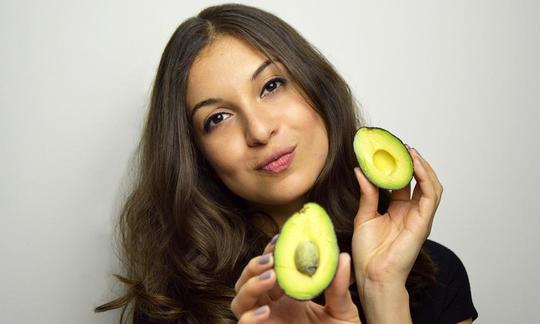

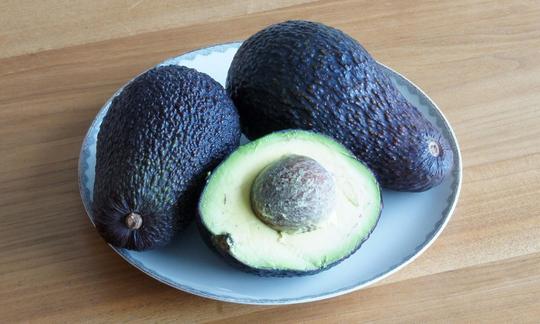

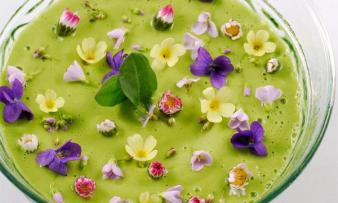
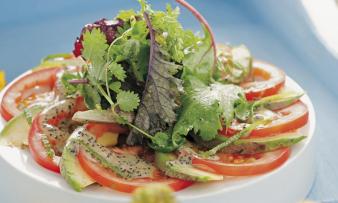
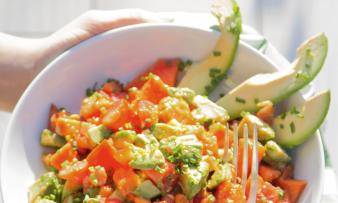





Comments